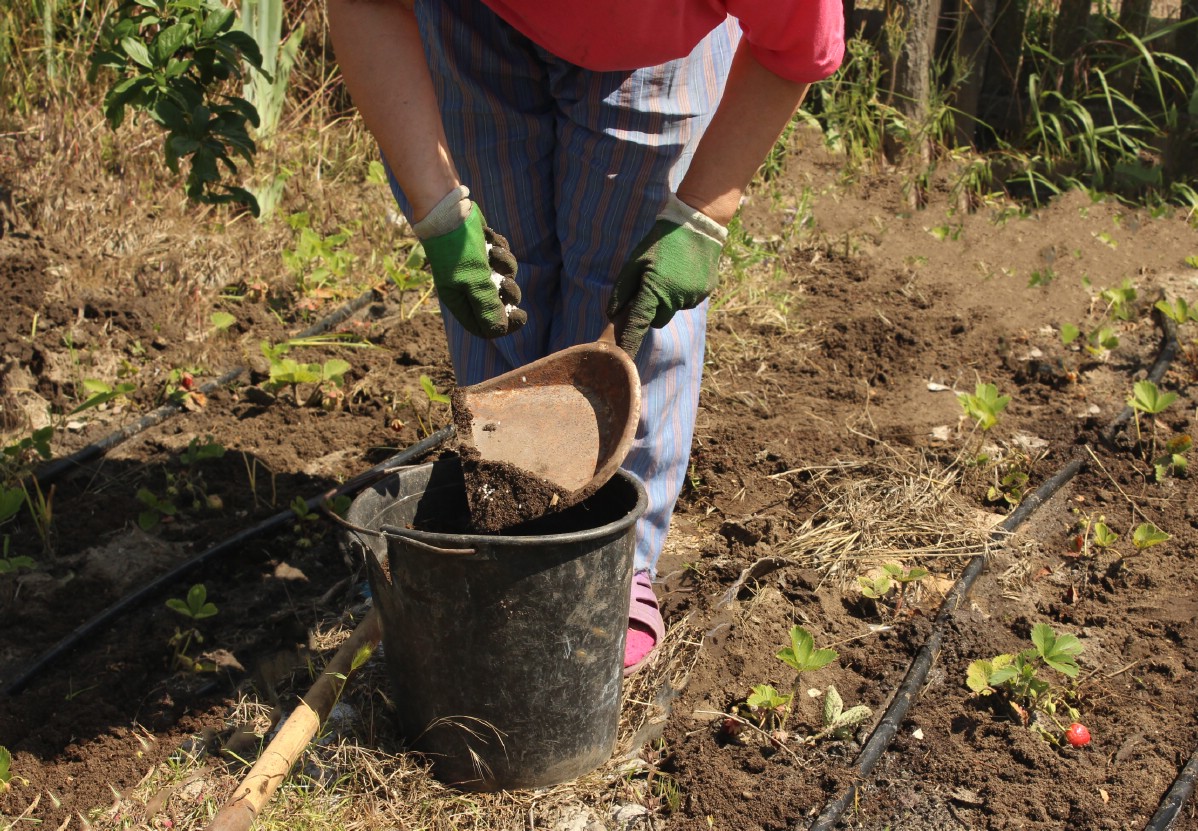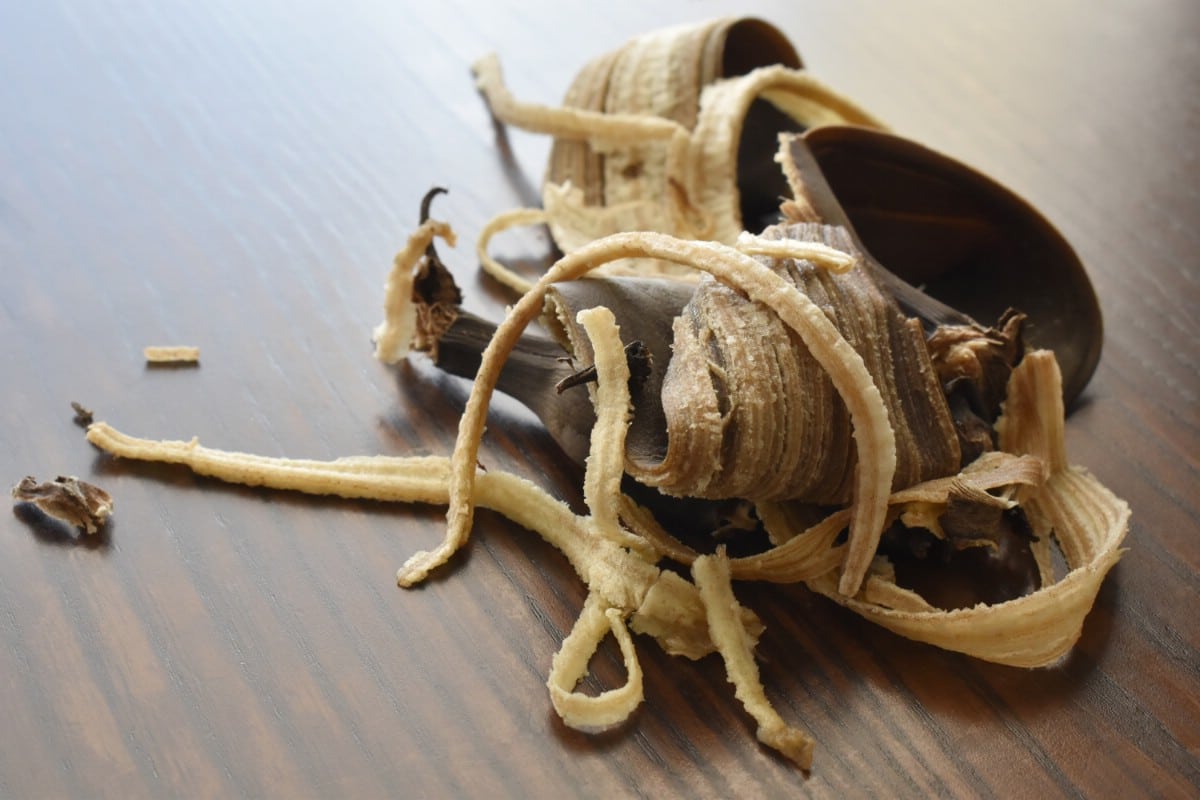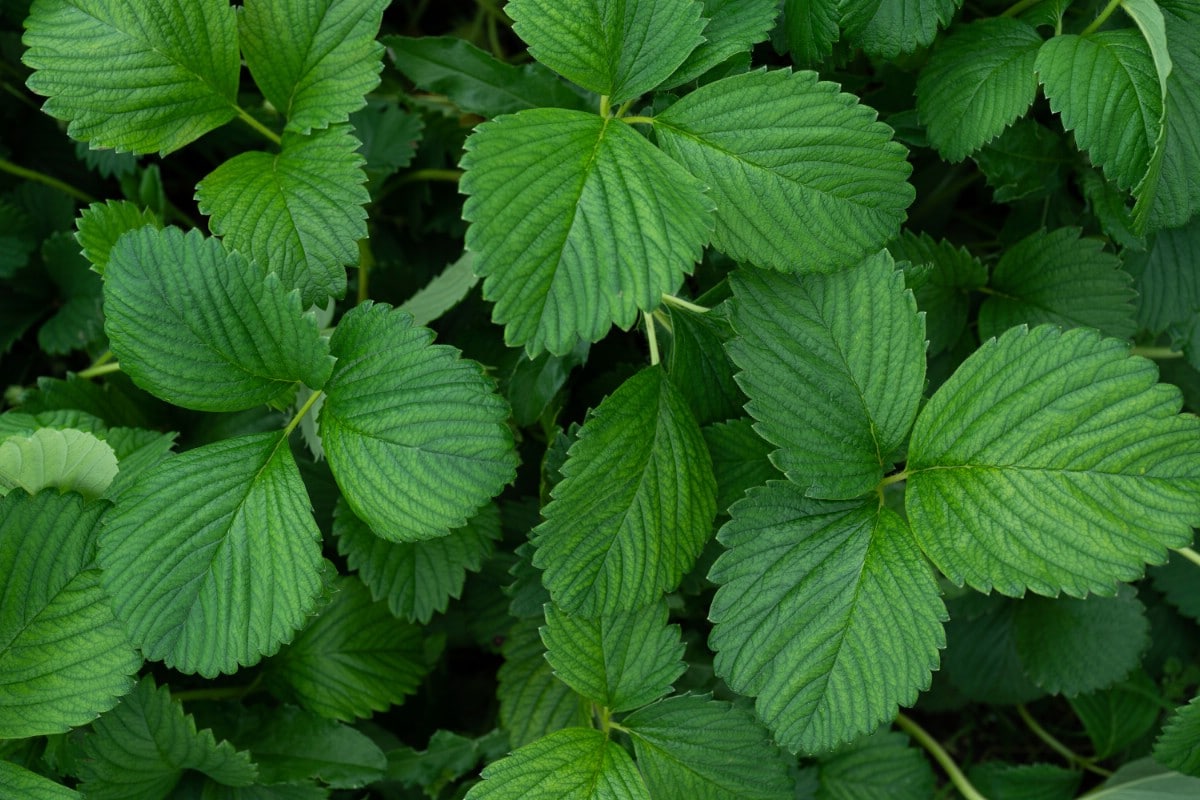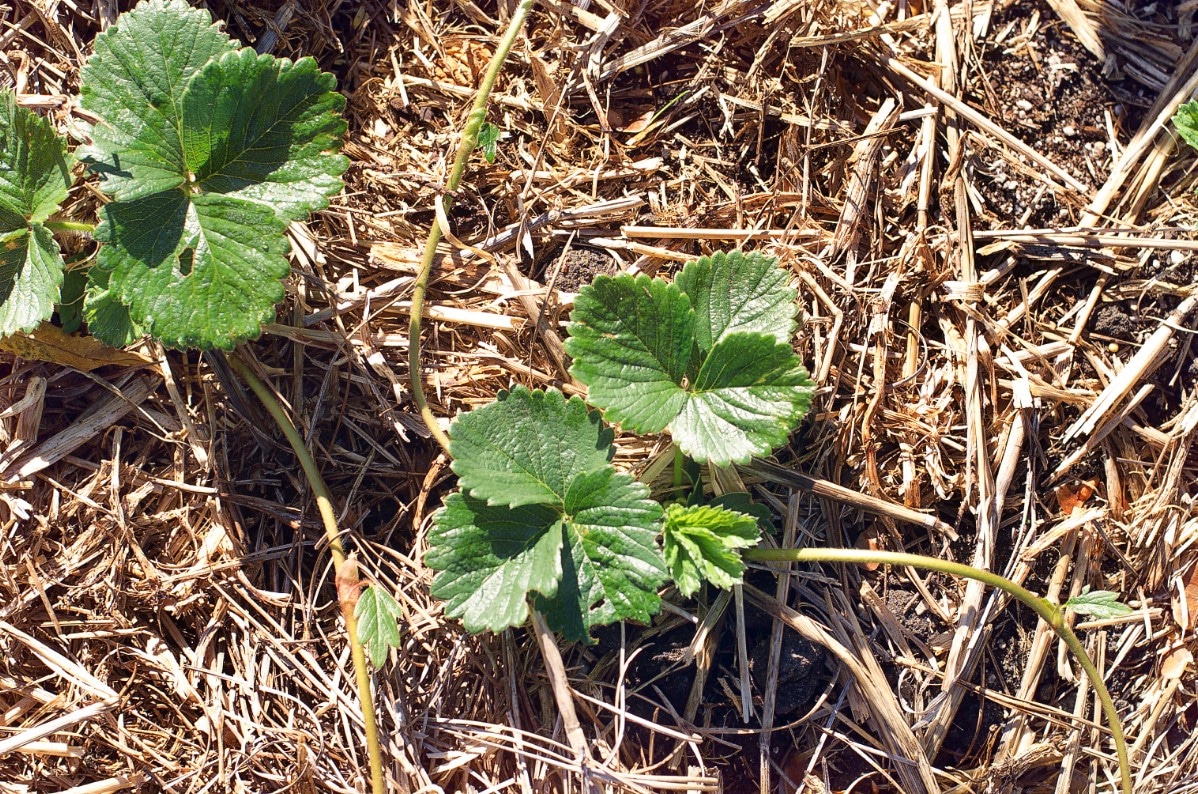Strawberries are perennial plants so the first fertilization is extremely important to the long-term health and productivity of your berry patch. How should you fertilize your strawberry plants the first time?

Baby’s First Fertilizer
The best thing you can do for your new strawberry plant babies is to work plenty of compost into the growing media. Compost releases nutrients into the soil slowly which your strawberry plants will continue to feed off of for a long time.
You could use a general fertilizer like this one at the beginning of the season if you prefer not to buy or make compost. Additional fertilization will be necessary for the best berry production in any case.
If you are growing your strawberries in the ground, you should apply a fertilizer 4-6 weeks after planting to help them produce lots of flowers. You can use a granular fertilizer at this point, like this one or this one.
Repeat the fertilizer every 2-4 weeks while your plants are flowering and fruiting if they’re in the ground or pots, less frequently if they’re in a raised bed. An inexpensive soil test kit will help you to know If your strawberries are getting all the nutrients they need at the proper time. For a detailed explanation of which nutrients are most important to strawberry development at which times, read about Fertilization and Nutrients for Strawberry Plants.
Overfertilizing

Be careful not to overfertilize your strawberry plants. Too much fertilizer can burn the roots of your strawberry plants and prevent them from being able to take up the nutrients they need from the soil. Another fertilizer option to help you avoid overfertilizing is homemade compost tea.
Compost Tea
Compost tea is easy to make at home. One easy recipe simply requires banana peels and water. You can boil the banana peels in water and allow it to cool for several hours, or simply fill an empty gallon jug ¾ full of unchlorinated water and stuff your empty banana peels inside as you use them.
When the jug is full, allow the peels to steep at least 24 hours more, then apply to the soil around your strawberries. Leave the peels in the jug and add water to make it ¾ full again. Repeat the process.
This compost tea can be applied as frequently as once a week if you wish without damaging your strawberry plants. This potassium-rich liquid fertilizer will be enough for your plants during the growing season if you applied compost and mulch at the beginning of the season when you first planted them.
Recipes for more nutrient-dense compost teas can be found here. These are useful if you have particularly poor soil or forgot to add balanced fertilizer or compost to the soil before you planted your strawberries.
Signs of overfertilizing

Watch out for these signs of overfertilization if you choose not to use a soil testing kit.
- Lots of leaf production but few or no flowers or berries. There may be other reasons your strawberries aren’t flowering though.
- Discolored or burned leaf edges.
- Stunted growth.
- Collapse and death of the whole strawberry plant.
Oh no! My strawberries are overfertilized!
If you realize your strawberry plants are overfertilized, don’t give up. You may be able to save them, but you won’t get any berries until next year.
If the strawberry plants are in pots, remove them and toss the soil. Rinse the root systems thoroughly and repot them with fresh soil. Avoid fertilizing until your plants are healthy again. Be especially careful to water them fully and allow the water to drain completely before watering again.
If your strawberries are in a shallow raised bed, remove as much soil as possible and replace it with fresh soil. Water the bed thoroughly and allow it to drain completely.
If your strawberries are in a deep raised bed or the ground, consider transplanting them to pots if possible. If your strawberries are well established and you catch the problem early, you may be able to save them without transplanting if you water the area very thoroughly and have well-draining soil.
Quick Notes On Fertilizing Strawberries

- Mix compost into your soil before planting or apply balanced slow-release fertilizer 2 weeks before planting.
- Mulch your strawberry plants with straw or pine needles to protect this year’s soil and enrich next year’s soil.
- Apply phosphate and potassium-rich fertilizer or compost tea to your strawberry plants every 2-4 weeks after flowering begins (4-6 weeks after spring planting).
- Water your strawberries very well before fertilizing.
- Use a soil testing kit to avoid overfertilizing your strawberries.
- Stop fertilizing your plants when they naturally slow down in production before they go dormant. Continue to water them well.
Now you are a strawberry plant fertilizing expert! Grow the biggest and best-tasting strawberries you can, and enjoy.






Leave a Reply